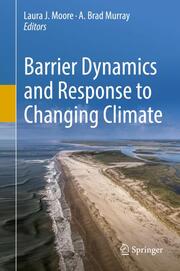-
Zusatztext
-
This book compiles and synthesizes the current understanding of the processes that shape barrier islands and barrier spits, with an emphasis on the response of these landforms to changing conditions. A majority of the world's population lives along the coast at the dynamic intersection between terrestrial and marine ecosystems and landscapes. As narrow, low-lying landforms, barriers are especially vulnerable to changes in sea level, storminess, the geographic distribution of important grass species, and the rate of sand supply. Some barriers will undergo rapid changes in state (e.g., from slowly landward migrating to disintegrating), on time scales that will impact humans. Unfortunately, attempts by humans to prevent change have the potential to hasten the loss of these landforms, threatening their continued existence as well as the recreational, financial and ecosystem service benefits they provide. Understanding the processes and interactions that drive landscape response to climate change and human actions is essential to human adaptation. As managers and governments struggle to determine how to plan for the future along low-lying coasts worldwide, and scientists conduct research that can provide useful guidance, this volume provides a much-needed compilation. The chapters are written to be of use for researchers, managers and policy-makers and for a broader audience of educated readers who are interested in the impacts of a changing world on coastal environments.
-
-
Kurztext
-
This book presents chapters, written by leading coastal scientists, which collectively depict the current understanding of the processes that shape barrier islands and barrier spits, with an emphasis on the response of these landforms to changing conditions. A majority of the world's population lives along the coast at the dynamic intersection between terrestrial and marine ecosystems and landscapes. As narrow, low-lying landforms, barriers are especially vulnerable to changes in sea level, storminess, the geographic distribution of grass species, and the rate of sand supply-some barriers will undergo rapid changes in state (e.g., from landward migrating to disintegrating), on human time scales. Attempts by humans to prevent change can hasten the loss of these landforms, threatening their continued existence as well as the recreational, financial and ecosystem service benefits they provide. Understanding the processes and interactions that drive landscape response to climate change and human actions is essential to adaptation. As managers and governments struggle to plan for the future along low-lying coasts worldwide, and scientists conduct research that provides useful guidance, this volume offers a much-needed compilation for these groups, as well as a window into the science of barrier dynamics for anyone who is generally interested in the impacts of a changing world on coastal environments.
-
-
Autorenportrait
- Dr. Laura J. Moore is an Associate Professor in the Department of Geological Sciences and the Curriculum for the Environment and Ecology at the University of North Carolina at Chapel Hill. She is an expert on large-scale coastal behavior, barrier island response to climate change, coastal dune dynamics, and couplings between physical, ecological and human dynamics in coastal systems. Dr. A. Brad Murray is a Professor in the Division of Earth and Ocean Sciences in the Nicholas School of the Environment at Duke University. He is a geomorphologist studying landscape evolution, including couplings between physical, ecological, and human dynamics, and responses to changing climate and land use, with a strong focus on coastal environments.
Detailansicht
Barrier Dynamics and Response to Changing Climate
ISBN/EAN: 9783319680842
Umbreit-Nr.: 2765871
Sprache:
Englisch
Umfang: xxiii, 395 S., 15 s/w Illustr., 11 farbige Illustr
Format in cm: 2.9 x 24.3 x 16.3
Einband:
gebundenes Buch
Erschienen am 26.01.2018
Auflage: 1/2019


